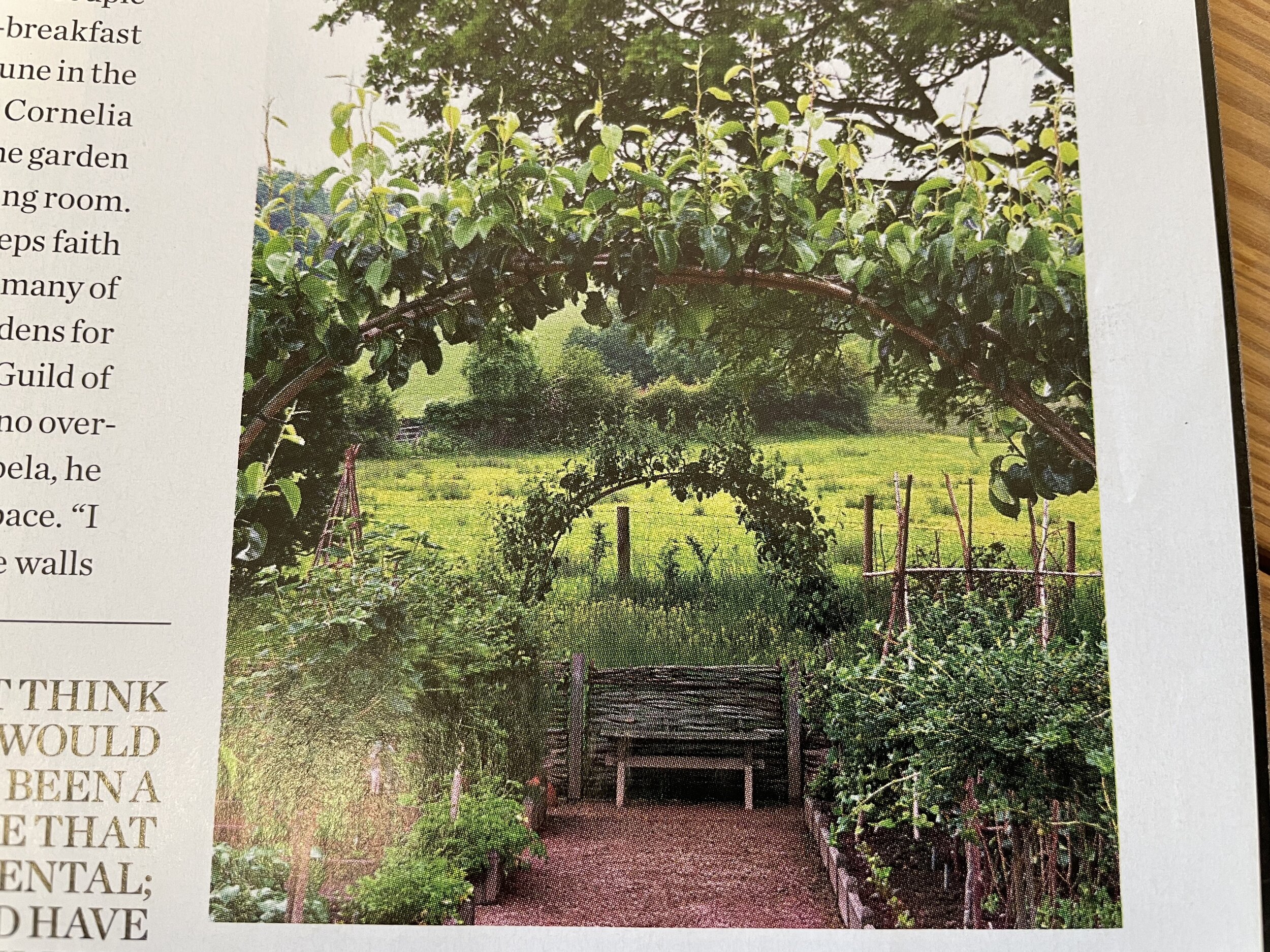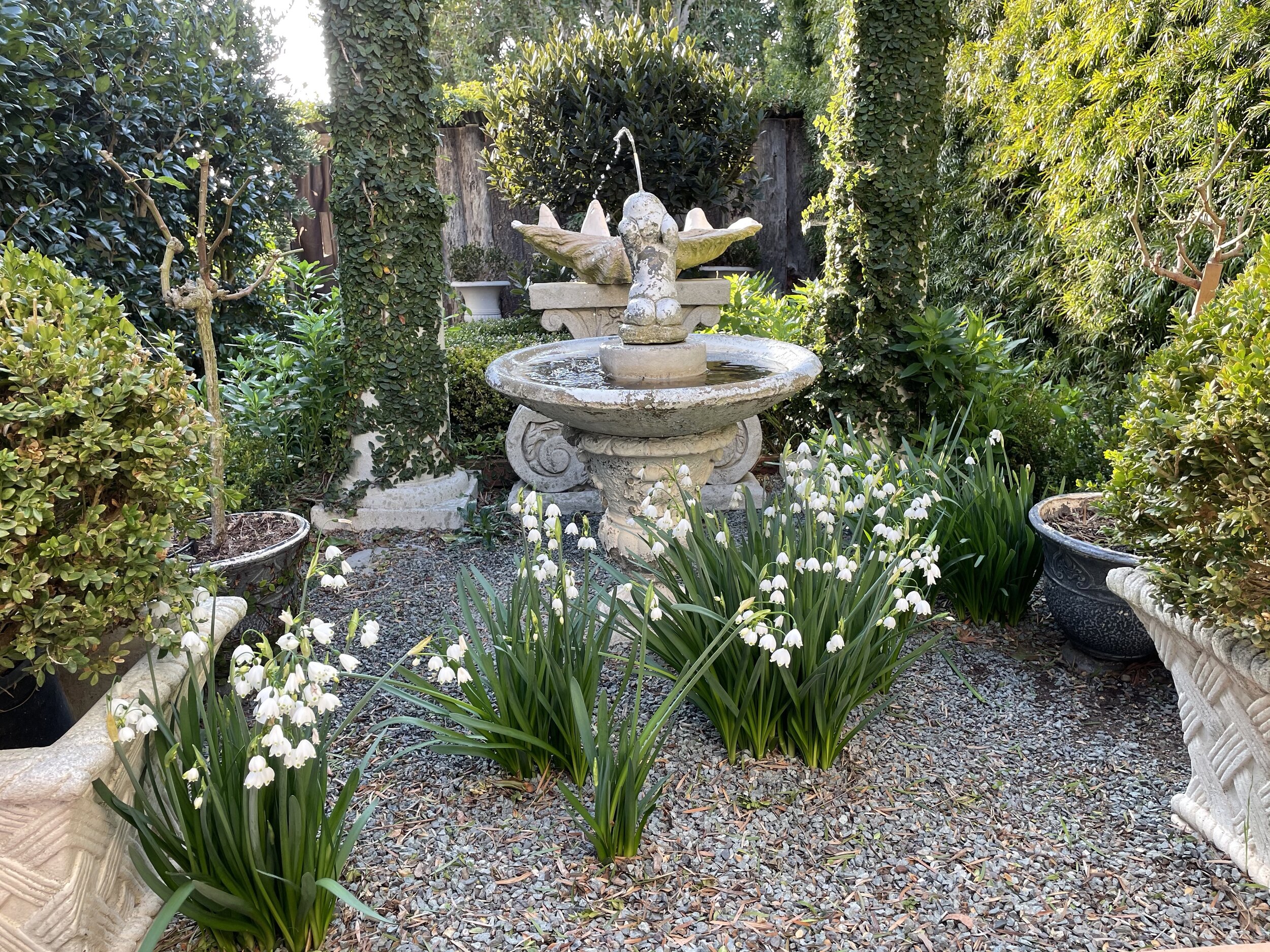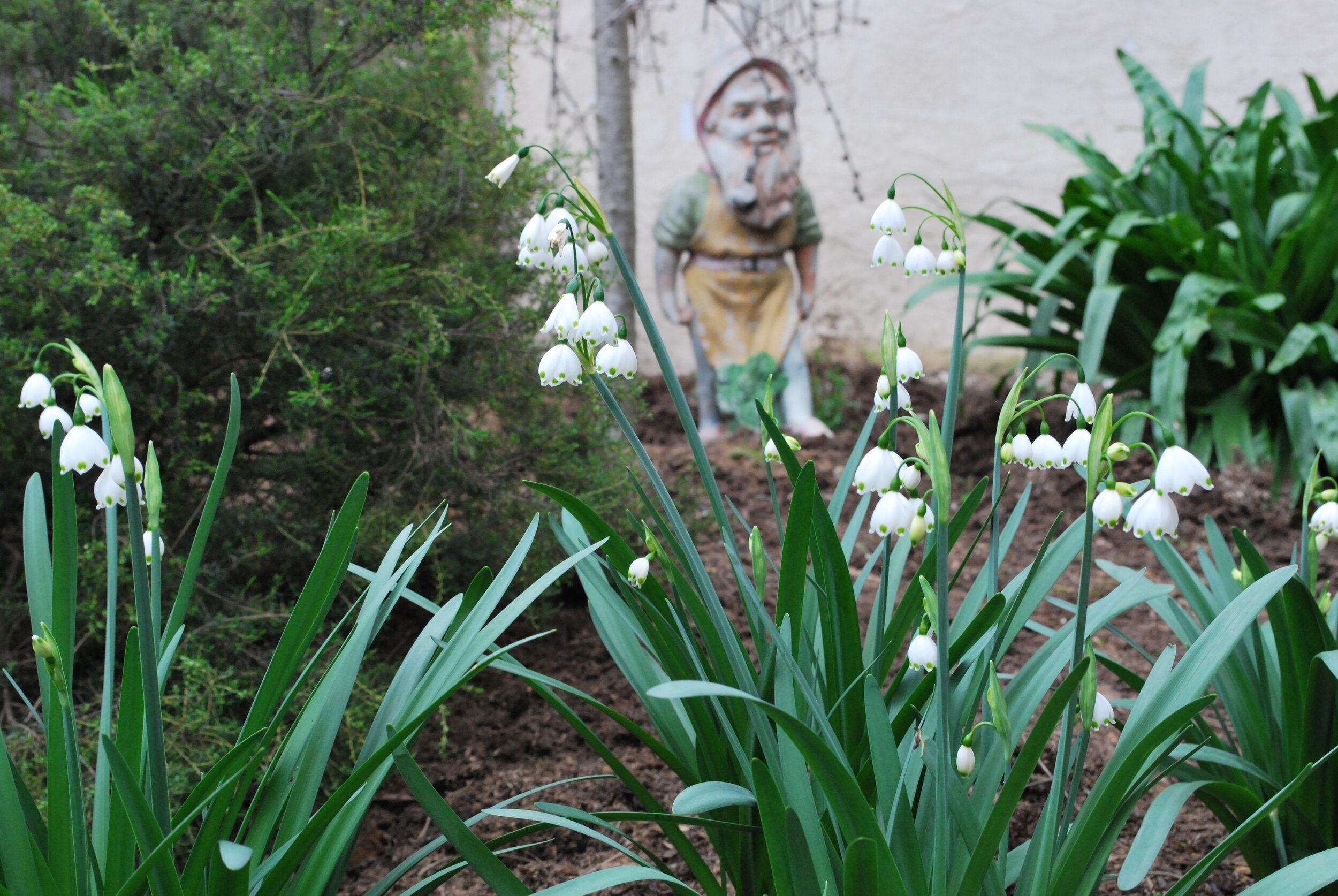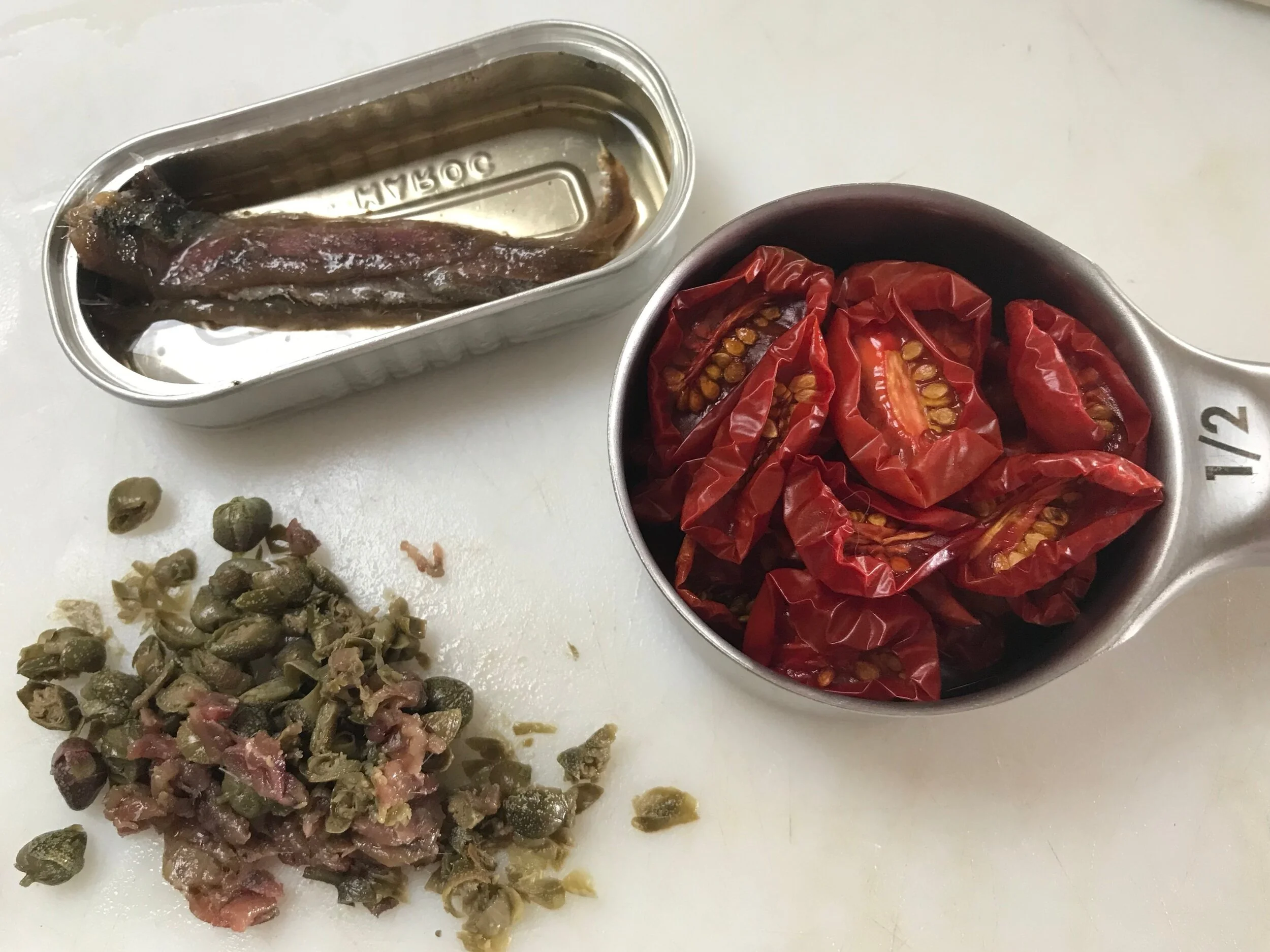I missed the boat on sowing tomato seeds this past February. I did have the chance to round up all of my volunteer tomato seedlings coming up from compost use throughout the garden and transplanted them all in raised beds in my potager. Interestingly, most of these volunteer tomato seedlings are Roma tomatoes.
Green Thumb Nursery in San Marcos, California always has a nice selection of tomato and vegetable seedlings in six packs late spring into summer. I bought six packs of Celebrity, Early Girl, Cherry Red, and Cherokee Purple. Much more than I usually plant, but this year I really wanted to have an abundance of tomatoes.
Out of room in my potager, I planted the six pack seedlings in a row near my potting shed, using a curly rod for support that I initially saw in Provence, Tomato Staking Technique. I haven’t looked recently, but I got my stakes at Dixieline Lumber, and I have seen them at Home Depot. As my tomato plants grow I wrap them carefully around the stakes, and also use gardener’s green tape for more security. For irrigation, and with my sandy soil, I installed a versatile 1/4” soaker hose, you can find at Home Depot, which has worked well.
Back to Basics.
1) Fertilize your tomato plants when they begin to flower, and monthly or more thereafter. I use GroPower Plus fertilizer, available at local Grangetto’s.
2) Water your tomato plants to 1” deep, and as frequently needed, if you have sandy or clay soil. Do not let your plants dry out and wilt, and do not over water when summer hot spells hit.
3) Tomato plants thrive with heat and sun, at least 6 hours or more. If you are coastal, tomato plants don’t really like ocean breezes and benefit from a protected sunny spot around your home that shields your tomato plants, possibly incorporating a house wall or fence. My west hedge and macadamia trees give my row of tomato plants some shielding.
4) Keep your tomato plants cleaned up, off of the ground, and opened up for air circulation and sunlight.
5) Indeterminate tomato varieties have a vining tendency. They can produce fruit until the plant is killed by frost. They bloom, set fruit, and ripen fruit all at the same time. These varieties need staking, and attention to removing suckers off of their main stem.
6) Determine tomato varieties are also called bush type, and are compact in form. They stop growing when fruit sets on their top bud. Their crop ripens all at once within a two-week period, and then the plant dies off. Ideal for use in containers, and don’t require staking, or pinching, and trimming of suckers.
7) Heirloom tomatoes or open pollinated varieties are generally considered 50 years or older, produce a true seed every year, and are known for their outstanding tomato flavors.
8) Hybrid tomato varieties are created from seeds produced by different plants that were crossed with each other to obtain certain desired characteristics. These varieties will not produce a true seed, and sometimes these tomatoes are considered to be slightly inferior in flavor and texture.
Years ago I interviewed Del Mar landscape designer, Linda Chisari, who is well known for her vegetable and tomato growing finesse. Linda back then grew over 30 different tomato varieties each year and shared, “the ones that do best for me are varieties that tolerate cool, overcast summer weather.” Linda’s “short list” then, was Juliet and Enchantment for eating fresh or in sauces. Green Zebra for it’s slightly acidic flavor and appearance. Dona, a small yet delicious French variety. Carmello for fabulous taste and appearance. Celebrity is a large flavorful tomato, and great when our summers are warm. Sun Gold, an outstanding orange cherry tomato. Of course, San Marzano for making sauce.
Growing tomatoes is all about preferences. What tomatoes you like to grow, and for what culinary purposes. Where you live and grow your tomatoes, be it coastal or inland, in the ground or in containers. How you prefer to support your tomatoes in your garden. Tomatoes are one of summer’s best experiences, sun-ripened mouth watering homegrown tomatoes, you won’t want to miss out on! Thyme for tomatoes is just around the corner.
Please share your favorite tomato varieties, and how you like to grow them.
Bon Appétit and Bon Weekend….Bonnie

































